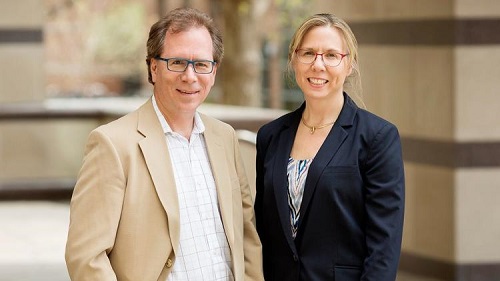By Jean-Jacques DeLisle, contributing writer
It is no surprise that the next generation of electrically powered portable devices, vehicles, and critical battery storage systems will require a significant upgrade over current lithium-ion battery technology. Though present-day lithium technologies offer high output power and good power density, the stress that the batteries undergo during use causes damage that reduces capacity over time and occasionally leads to fatal failures that end in fire.
Researchers at the University of Illinois Urbana-Champaign (UIUC) are following an avenue of investigation that embraces these destructive material tendencies and are leveraging silicon-based anodes and self-healing nanoparticle composite bonding agents to bring the benefits of silicon anodes to batteries without the drawbacks of silicon’s delicacy.
“Silicon is a really interesting material,” shared Nancy Sottos, a lead researcher on the project and a professor of material science and engineering at UIUC. “It’s also very abundant, relatively inexpensive, environmentally sound, and silicon can store a lot more lithium and so you can get really high theoretical capacities with silicon.”

Nancy Sottos, professor of materials science and engineering (right), and Scott White, professor of aerospace engineering at UIUC (left), led a research team investigating methods for developing self-healing batteries with silicon-based anodes. (L. Brian Stauffer/University of Illinois)
In current lithium-ion batteries, the anodes are constructed of graphite, which is able to hold fewer electrons than silicon. However, during charge-discharge cycles, graphite only expands about 6%, whereas silicon expands as high as 400%, which leads to cracking and progressive failure. A marginally successful technique to mitigate this deterioration is to use segments of silicon in a glue-attached compound anode, though previous gluing attempts in research just led to the glue weakening and the segments separating. The researchers from UIUC discovered that introducing nanoparticle composites as bonding agents may not solve the separation process, but these materials could establish bonds after peeling — ultimately self-healing.
“When it charges, if [the bond] pulls open and debonds — which would normally cause a loss of electrical connection — basically, these bonds are going to reform and make that interface sound again,” detailed Sottos. “You’ll continue to have high performance of the electrode.”
The UIUC research team published the study in the journal Advanced Energy Materials, where they shared their findings that this new technique could retain 80% of its starting capacity for 400 charging cycles. Compared to lithium-ion technologies, this is nearly a 400% increase in capacity after 400 cycles.
Fortunately, or unfortunately, the UIUC energy storage research team faces a wide expanse of research and industrial competition in the energy storage sector. There are many areas of investigation for other energy storage technologies, such as fuel cells and ultracapacitors, and many groups researching techniques to enhance the prolific lithium-ion battery.
“There’s an oversupply of early-stage, very innovative research in batteries,” shared Sara Chamberlain, managing director for Energy Foundry, an approximately $25 million evergreen venture fund for early-stage energy startups from Chicago. “And there’s a shortage of investment capital.”
This is currently leading to many promising technologies being tabled due to lack of funding. Nevertheless, the future does look bright for better energy storage technologies, as the competitive landscape for batteries is likely to yield much higher-capacity, more reliable, and safer batteries to power our life on-the-go.
Sources: Chicago Tribune, Midwest Energy News
Advertisement
Learn more about Electronic Products Magazine





